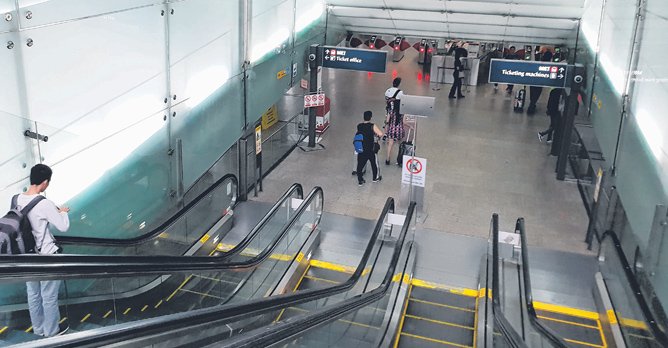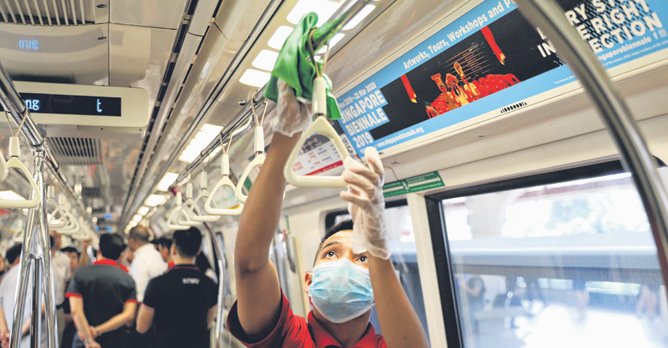Public transport ridership doubles as circuit breaker measures eased
07 Jun 2020|173 views
Even as trains and buses became noticeably more crowded on 2 June 2020, after the COVID-19 circuit breaker measures were eased, public transport ridership during the morning rush hour was still at just 36% of the levels prior to the COVID-19 outbreak.
But compared with during the circuit breaker period, the ridership had doubled, the Land Transport Authority (LTA) told The Sunday Times on 6 June 2020.

LTA said the drop in ridership compared with before the COVID-19 outbreak was due to some workers continuing to telecommute. It urged employers to adopt staggered working hours as much as possible for those who need to go to offices.
While some commuters have raised concerns about the number of people now taking public transport, LTA said it has several measures in place to help make it safer for commuters to travel.
It said safe management measures here are similar to that of other major cities such as Seoul, Hong Kong and Taipei, where mass public transit ridership has also picked up. "We strictly enforce the mask-wearing rule on public transport, encourage commuters to be socially responsible by refraining from talking and advocate good personal hygiene," said LTA. It has continued to deploy transport ambassadors and public transport workers to remind passengers of the precautions.

It added that public transport operators have continued to clean and disinfect the various facilities such as bus interchanges and MRT stations daily. More emphasis is placed on sanitising high contact points such as handrails, buttons, grab poles and seats.
Transport Minister Khaw Boon Wan said on 1 June 2020 that safe distancing will not be possible at times on public transport with the increased ridership, which thus makes it important that commuters keep their masks on at all times.
The Public Transport Council recommends that passengers can better protect themselves by washing or sanitising their hands after touching common surfaces such as handrails and grab poles. They should also properly dispose of used masks into rubbish bins after their trips.
Even as trains and buses became noticeably more crowded on 2 June 2020, after the COVID-19 circuit breaker measures were eased, public transport ridership during the morning rush hour was still at just 36% of the levels prior to the COVID-19 outbreak.
But compared with during the circuit breaker period, the ridership had doubled, the Land Transport Authority (LTA) told The Sunday Times on 6 June 2020.

LTA said the drop in ridership compared with before the COVID-19 outbreak was due to some workers continuing to telecommute. It urged employers to adopt staggered working hours as much as possible for those who need to go to offices.
While some commuters have raised concerns about the number of people now taking public transport, LTA said it has several measures in place to help make it safer for commuters to travel.
It said safe management measures here are similar to that of other major cities such as Seoul, Hong Kong and Taipei, where mass public transit ridership has also picked up. "We strictly enforce the mask-wearing rule on public transport, encourage commuters to be socially responsible by refraining from talking and advocate good personal hygiene," said LTA. It has continued to deploy transport ambassadors and public transport workers to remind passengers of the precautions.

It added that public transport operators have continued to clean and disinfect the various facilities such as bus interchanges and MRT stations daily. More emphasis is placed on sanitising high contact points such as handrails, buttons, grab poles and seats.
Transport Minister Khaw Boon Wan said on 1 June 2020 that safe distancing will not be possible at times on public transport with the increased ridership, which thus makes it important that commuters keep their masks on at all times.
The Public Transport Council recommends that passengers can better protect themselves by washing or sanitising their hands after touching common surfaces such as handrails and grab poles. They should also properly dispose of used masks into rubbish bins after their trips.
Latest COE Prices
October 2025 | 1st BIDDING
NEXT TENDER: 23 Oct 2025
CAT A$128,105
CAT B$141,000
CAT C$74,301
CAT E$140,009
View Full Results Thank You For Your Subscription.



















